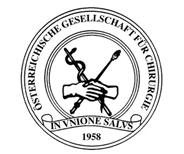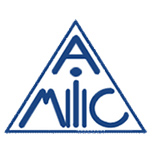Facial surgery
There are many procedures available for facial surgery – here we present the facelifting techniques. In this area, AFS MEDICAL offers biocompatible implants of a minimal invasive nature. Faceliftings are performed on the forehead, eyebrows, temples, cheeks and neck. Several areas of the face can either be individually or together optimised, or a complete facelift performed. By the use of minimal invasive methods (very small cuts only), it is well possible to retain the features and expressiveness of the face. A natural result is thereby achieved. With regard to the intensity of the lifting, the plastic surgeon differentiates between the skin layers affected: pure skin tightening (also model lifting, not very prolonged, s-shaped incision), double-layer lifting (tightening of the connective tissue and muscle layer = SMAS layer = superficial musculoaponeurotic system) and three-layered lifting, i.e. the tightening of the facial bone skin. A differentiation is also made according to the parts of the face to be tightened:
Neck lift
Tightening of the neck area, removal of excess fat from under the chin or of loose skin from around the neck – mostly performed by a crescent-shaped incision under the chin, and tightening of the neck muscles.
Brow lift
For an eyebrow lift, the plastic surgeon removes a strip of skin by means of a crescent-shaped incision at the edge of the upper eyebrow, thus tightening the area around the eye.
Forehead lift
A classical forehead lift to tighten the area around the forehead and eyes results in a long scar at the upper hairline or in the hair scalp. In order to achieve an optimal cosmetic result, the procedure today is frequently performed on an endoscopic / minimal invasive basis. Here it is often possible to perform a brow lifting at the same time.
Temple lift
Lifting the cheeks and smoothing the area around the eyes (crow's feet) by a small incision under the hair in the area of the temple – usually with younger patients.
SMAS lift
The SMAS lift is regarded as the classical facelift. Here the cheek skin is raised and the layer of connective tissue separated from the mimic musculature lying underneath and moved upwards. The skin is fixed in place by the surgeon using sunken sutures without tightening them. Another name for this procedure is deep composite facelift. The incision generally runs along the hair region and/or around the ear. For a mid-facelift, however, the drooping cheek tissue is repositioned upwards from the lower lid and fixed with internal sutures. Drooping corners of the mouth and nasolabial folds, the occasionally deep folds stretching from the sides of the nose to the corners of the mouth, can also be alleviated using this procedure.
MIS - Endoscopic facelift
The endoscope is a tubular instrument with a camera attached at the end. When inserted under the skin by means of small incisions in the hairy part of the head, the surgeon lifts the connective tissue. This procedure is primarily used for forehead or eyebrow lifting, although it can also be used for other parts of the face. The endoscopic facelift is suitable in cases when the first signs of ageing occur. In the event of pronounced ageing of the face, it is always necessary to fall back on classical facelifting methods. The advantage: tiny scars.




